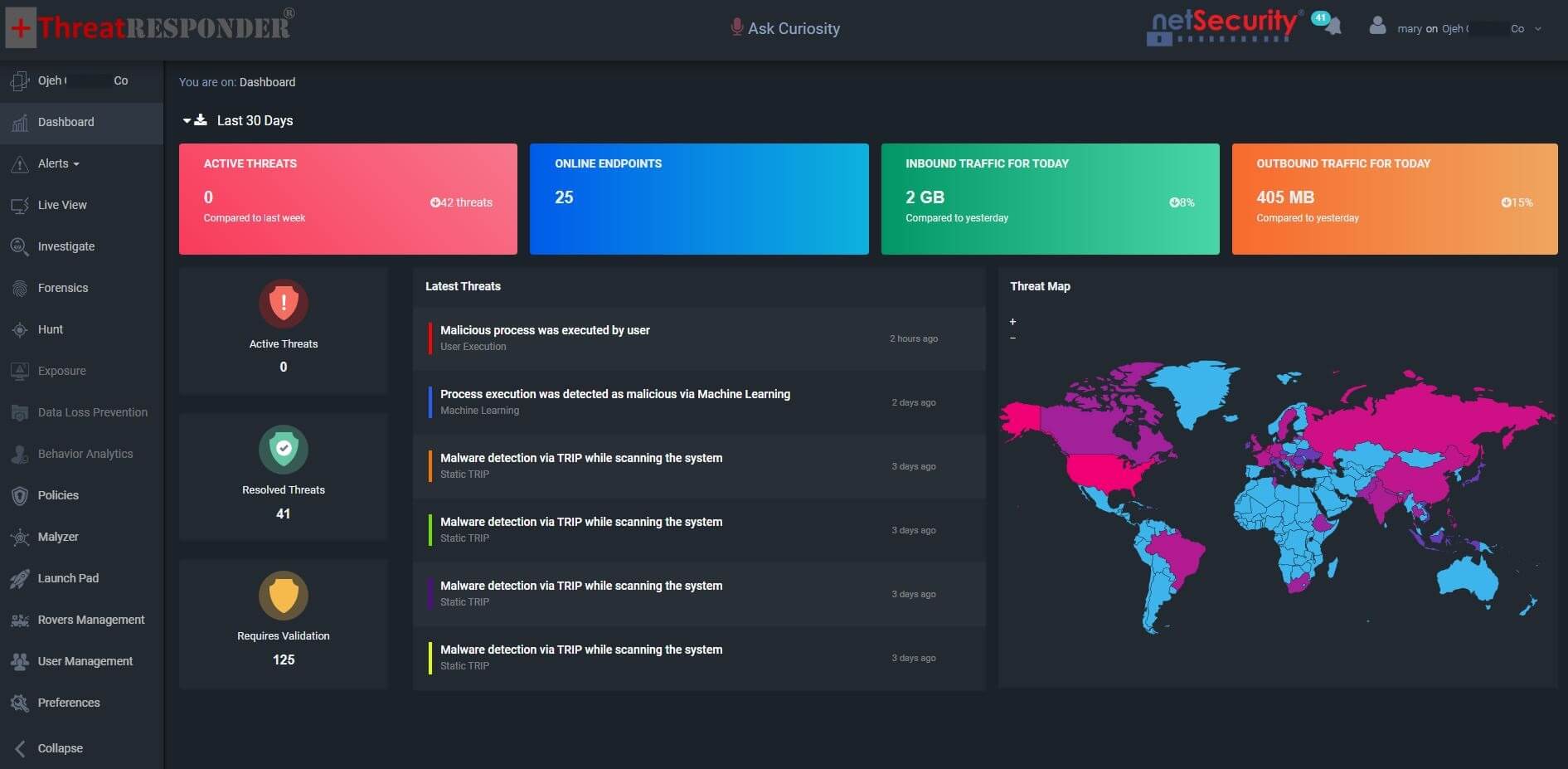Identify and Prioritize Vulnerabilities with ThreatResponder’s Exposure
Vulnerabilities are inherent to any computer system, network, or software. They refer to weaknesses or gaps in security systems that can be exploited by attackers to gain unauthorized access, compromise sensitive data, or disrupt operations. In recent years, vulnerabilities have emerged as a significant threat to organizations, posing significant risks to their security, reputation, and financial well-being.
Recent Vulnerabilities
The Cybersecurity and Infrastructure Security Agency (CISA) and other organizations recently released a security advisory highlighting vulnerabilities in Ivanti, Atlassian, GitLab, and other software. These vulnerabilities pose a significant risk to organizations, as attackers can exploit them to gain unauthorized access to systems, exfiltrate sensitive information, or execute malicious code.
One vulnerability that caught the attention of security experts was a zero-day vulnerability in the Ivanti Connect Secure and Ivanti Policy Secure solutions. This vulnerability, CVE-2023-46805 and CVE-2024-21887 could allow attackers to gain administrative privileges on affected systems, enabling them to execute arbitrary code or install malicious applications. The CISA advisory advised organizations to install the necessary patches and update their systems to mitigate this vulnerability.
Similarly, a security advisory was released by Atlassian regarding vulnerabilities in Jira, a popular project management tool. The vulnerability CVE-2023-22527 is an RCE (Remote Code Execution) Vulnerability found in the Confluence Data Center and Confluence Server. These vulnerabilities, if exploited, could allow an attacker to compromise Confluence accounts, access sensitive data, or perform unauthorized actions. Atlassian released patches to address these vulnerabilities, urging organizations to apply the updates promptly.
Another notable vulnerability recently highlighted was a high-severity vulnerability in GitLab, a web-based version control and repository management tool. CVE-2023-7028 affects GitLab’s access controls and could allow attackers to bypass authentication and gain unauthorized access to sensitive information or perform unauthorized actions. GitLab released a patch to address this vulnerability, urging organizations to update their systems promptly.
Top Vulnerabilities in 2023
Vulnerabilities have also caused significant damage to organizations in the past. One such incident involved the “Citrix Bleed” vulnerability, which affected Citrix’s NetScaler and Gateway products. This vulnerability allowed attackers to access and exfiltrate sensitive data from organizations’ networks, leading to significant financial losses and reputational damage.
Similarly, a vulnerability CVE-2023-34362 in the MoveIT File Transfer software, a web-based supply chain management platform, was exploited by Cl0p ransomware and other threat actors, leading to the theft of sensitive information from numerous organizations. This incident highlighted the importance of regularly patching systems and maintaining robust security measures to prevent such vulnerabilities from being exploited.
Impact of Vulnerabilities on Organizations
Vulnerabilities can have far-reaching consequences for organizations, impacting their operations, reputation, and financial security. When vulnerabilities are exploited, attackers can gain access to sensitive data, compromise systems, or disrupt operations, leading to financial losses, legal consequences, and damage to customer trust.
- Financial Losses: Vulnerabilities can lead to significant financial losses for organizations. The costs associated with data breaches, system compromise, and recovery efforts can be substantial. Additionally, organizations may face fines or regulatory penalties for non-compliance with data security regulations.
- Reputational Damage: Vulnerabilities can lead to reputational damage for organizations. Customers and stakeholders lose trust in organizations that fail to protect sensitive information or experience data breaches. This damage can be long-lasting and impact the organization’s ability to attract and retain customers.
- Operational Disruption: Vulnerabilities can also disrupt operations, causing downtime, interruptions, and financial losses. Attackers may use vulnerabilities to launch distributed denial-of-service (DDoS) attacks, disrupt critical systems, or steal sensitive data, resulting in disruptions to business processes.
Methodologies for Prioritizing Vulnerabilities
- Common Vulnerability Scoring System (CVSS): CVSS is a widely accepted industry standard for assessing and scoring vulnerabilities based on severity. It considers factors like exploitability, impact, and complexity to assign a score, aiding in prioritization.
- Threat Intelligence: Leveraging threat intelligence helps in understanding current threat landscapes. It allows organizations to prioritize vulnerabilities actively exploited in the wild or likely to be targeted soon.
- Asset Criticality: Assessing the criticality of assets helps prioritize vulnerabilities based on their potential impact on the most valuable systems and data. High-value assets merit more attention and protection.
- Patch Availability and Ease of Exploitation: It is crucial to prioritize vulnerabilities based on whether patches are available and the ease with which attackers can exploit them. Unpatched vulnerabilities and those with easy exploitability should be addressed urgently.
Identify and Prioritize Vulnerabilities with ThreatResponder Exposure Module
NetSecurity’s ThreatResponder’s Exposure module is a comprehensive vulnerability management solution that is designed to aid organizations in identifying and prioritizing vulnerabilities within their environment. This module offers several key features:
1. Vulnerability Identification:
The ThreatResponder’s Exposure module scans and identifies vulnerabilities in an organization’s endpoint and provides real-time details of the identified vulnerabilities.
2. Risk Scoring:
ThreatResponder provides the assigned CVSS scoring to determine the risk of vulnerabilities based on their severity, exploitability, and potential impact.
3. Customizable Reporting and Recommendations:
ThreatResponder generates customizable reports, providing actionable insights and recommendations for prioritizing and mitigating vulnerabilities effectively.
Try ThreatResponder
In the ever-evolving landscape of cyber threats, defending your organization is exceptionally critical for the survival of your business. Are you ready to take the next step in defending your organization against cyber threats? Explore ThreatResponder by NetSecurity today and bolster your organization’s cybersecurity defenses.

Disclaimer
The page’s content shall be deemed proprietary and privileged information of NETSECURITY CORPORATION. It shall be noted that NETSECURITY CORPORATION copyrights the contents of this page. Any violation/misuse/unauthorized use of this content “as is” or “modified” shall be considered illegal and subjected to articles and provisions that have been stipulated in the General Data Protection Regulation (GDPR) and Personal Data Protection Law (PDPL).











